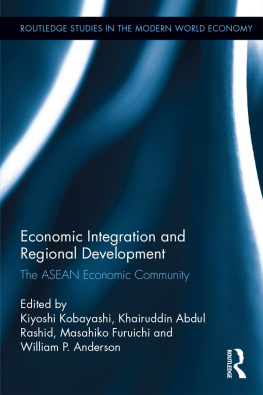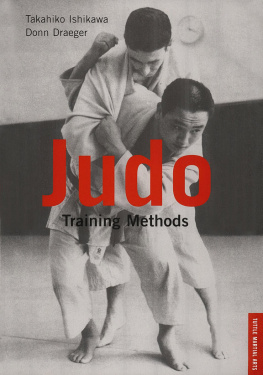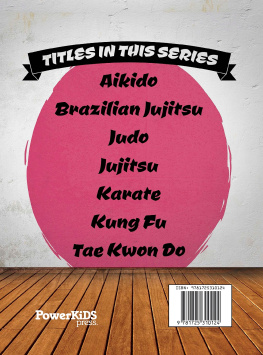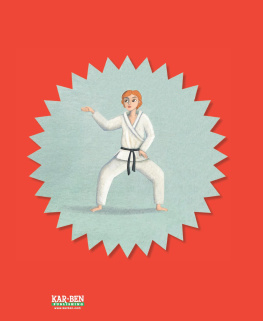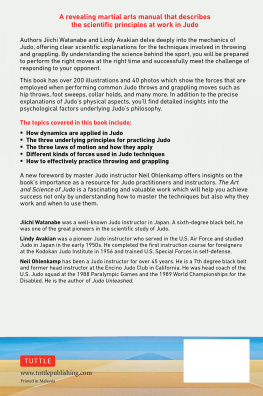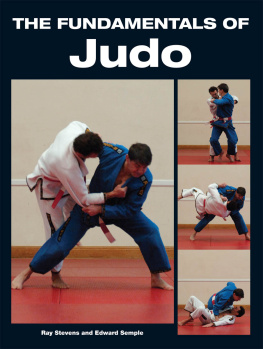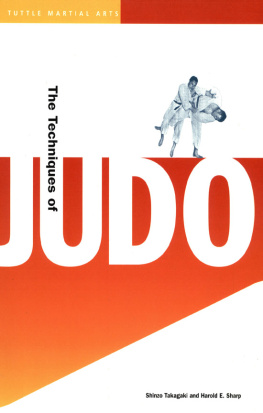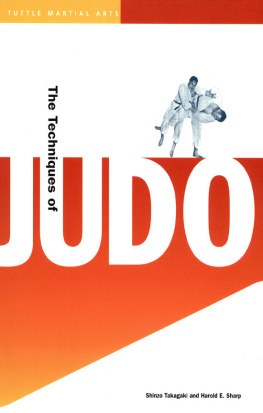Table of Contents

| (Falling) |
| (Throwing Techniques) |
| (Unbalancing Opponent) |
| (Position for Throwing) |
| (Throwing) |
| (Combination Techniques) |
| (Body Drop Throw) |
| (One Arm Shoulder Throw) |
| (Both Arm Shoulder Throw) |
| (Floating Hip Throw) |
| (Major Hip Throw) |
| (Lift and Pull Hip Throw) |
| i (Lift and Pulling Sleeve Hip Throw) |
| (Hip Wheel Throw) |
| (Sweeping Loin Thrown) |
| (Springing Hip Throw) |
| (Winding Spring Hip Throw) |
| (Rear Hip Throw) |
| (Changing Hip Throw) |
| (Inside Thigh Throw) |
| (Major Outer Reaping Throw) |
| (Major Outer Winding Throw) |
| (Major Outer Rear Drop Throw) |
| (Minor Outer Reaping Throw) |
| (Minor Outer Breaking Throw) |
| (Major Inner Reaping Throw) |
| (Minor Inner Reaping Throw) |
| (Knee Wheel Throw) |
| (Propping Ankle Throw) |
| (Lift Pull Foot Sweep) |
| (Somersault or Stomach Throw) |
| (Inner Winding Throw) |
| (Outer Winding Throw) |
| (Floating Technique Throw) |
| (Grappling Techniques) |
| (Holding Techniques) |
| (Cross-Chest Holding) |
| (Shoulder Holding) |
| (Upper Four-Corner Holding) |
| (Side Four-Corner Holding) |
| (Vertical Four-Corner Holding) |
| (Strangling Techniques) |
| (Naked Strangle) |
| (Sliding Lapel Strangle) |
| (One Side Strangle) |
| (Natural Cross Strangle) |
| (Reverse Cross Strangle) |
| (Half Cross Strangle) |
| (Armlock Techniques) |
| (Cross Armlock) |
| (Arm Coil Lock) |
| (Arm Lock) |

All of the illustrations for THE SPORT OF JUDO were taken by Mr. Sharp. The contest photographs are intended as illustrations only and do not, necessarily, illustrate the lesson shown on the particular page.
The calligraphy on the back cover was written by Mr. Kobayashi. They are the characters for the word "Judo" and actually mean gentle way.
Contest Rules of Kodokan Judo

English translation by the Kodokan, from the Original Japanese Text, in August, 1951; Translation revised by the Kodokan, in June 1953.)
CONTEST AREA
Article 1. The Contest Area (or Shiaijo) shall be a square platform, 30 feet in length and width, raised one and a half feet above the ground, and covered with 50 pieces of "Tatami." (See Appendix for "Tatami") To prevent injuries and other dangers, the area around the perimeter of the Contest Area shall also have mats.
If, for lack of space or other circumstances, sufficient area cannot be provided, the conditions shown in Article 1 may not necessarily be followed. However, the demarcation line between the Contest Area and the area around the perimeter must be marked distinctly. It is permissible to substitute canvas, vinyl articles or the like for "Tatami-omote" or rush matting.
COSTUME
Article 2. The Contestant shall wear "Judogi" (Judo Costume). (See 'Appendix for "Judogi") The Judogi to be worn by the contestant shall comply with the following conditions:
(a) The jacket shall be long enough to cover the hips, when held closed at the waist by a belt or sash;
(b) The sleeves shall be loose, (there must be an opening or play of at least more than one and a quarter inches between the cuff and the forearm), and shall extend more than half way down the forearms;
(c) The trousers shall be loose, (there must be an opening or play of at least one and a quarter inches between the bottom of the trousers and the leg), and shall reach more than half way down the legs;
(d) The belt or sash must be tied properly with a square knot, tight enough to prevent the jacket from coming loose, and must be long enough to go twice around the body with its two ends left free at least three and three quarters of an inch from the knot when tied.
Article 3. The contestants must keep their finger and toe nails cut short; and must not wear any articles, such as rings, ornaments etc., liable to cause injury to the opponent.
CONTEST
Article 4. The contestants shall stand about twelve feet apart, at the centre of the Contest Area, facing each other, and exchange a salute .by bowing simultaneously. After finishing the salutation, the contest shall be started immediately upon the announcement of "Hajime" ("Start", "Begin" or "Go") by the Referee.
As a rule, the salutation for the contest shall be made in standing posture; however, the salutation in formal Japanese kneeling posture may be used instead. In the latter case, the contestants shall finish the salutation, stand up facing each other, and then the contest shall be started immediately on the announcement of "Hajime" by the Referee.
Article 5. When a contest comes to an end, the contestants shall return to the positions originally taken at the start of the contest, stand face to face and, following the indication or declaration by the Referee, the contestants shall make the salutation simultaneously.
Article 6. The result of the contest shall be judged on the basis of "Nagewaza" (throwing technique) and "Katamewaza" (grappling technique).
Article 7. The result of a contest shall be decided on the basis of not more than "Ippon" (one point).
Article 8. The contest shall be started with both contestants in standing posture.
Article 9. In the following cases, a contestant may shift into a lying position. However, if any technique applied is not continued properly, the Referee may, at his discretion, make the contestants stand up:
(a) When a contestant, after obtaining some result by his throwing techniques, shifts without interruption into a lying position and takes offensive;
(b) When a contestant falls while applying a throwing technique against his opponent; or when a contestant takes the offensive when his opponent falls down;
(c) When a contestant, after obtaining, in a standing position, some result by "Shime-waza" (strangling technique) or "Kansetsu-waza" (technique of bending and twisting the joints), shifts without interruption into a lying position and takes the offensive.
Article 10. The time limit for a contest shall be from 3 to 20 minutes. However, the above limit may be extended, in certain special cases.
Article 11. When the time allotted for the contest is expired, the Referee shall be notified by the ringing of a bell or by some other means.
Article 12. Any technique applied simultaneously with the signal notifying expiration of the time limit shall be judged as valid. In the case of an "Osaekomi" (holding) officially announced, the time limit shall be extended until the "Osaekomi" is completed or broken.
Article 13. Any technique applied when one or both of the contestants are outside of the Contest Area, shall be judged as null and void.


